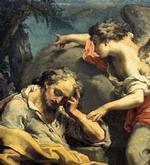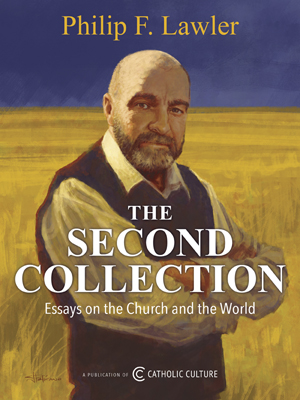Catholic Recipe: Pumpkin Tarts
INGREDIENTS
- 1 Recipe for Pirogs (see link)
Filling
- 2 cups mashed cooked pumpkin
- 1 cup light brown sugar
- 1/2 cup white granulated sugar
- 2 teaspoons cinnamon
- 1/2 teaspoon ginger
- 1/2 teaspoon nutmeg
- 1 teaspoon salt
- 3 eggs beaten
- 1 1/2 cups cream
Details
Yield: 12 tarts/1 large pie
Prep Time: N/A
Difficulty: ★★☆☆
Cost: ★★★☆
For Ages: 15+
Origin: United States
showFood Categories (2)
showOften Made With (2)
showFeasts (3)
"A very favorite dish among the poorer classes of America is pumpkin pie-pronounced punkin," according to a British news item at the turn of the twentieth century. Little did the author know that the country's enjoyment of pumpkin pie was not limited by economic status or class distinction. Nor did he realize that to the average American a Thanksgiving feast without pumpkin pie would be like Christmas without Santa Claus.
In spite of its universal popularity, pumpkin pie does not represent mere gustatory delight. Pumpkin pie awakens deeply nostalgic memories in the hearts of most older persons. It is the symbolic link between yesterday and today. When Whittier wrote, "What calls back the past like the rich pumpkin pie?" he did not pose a purely rhetorical question. He expressed a basic sentimental attitude that most Americans share.
The modern pumpkin pie is the result of several centuries of evolution. Pompion, as pumpkin formerly was called, was cultivated in England as early as 1570. The British housewife cut a hole in the side, extracted the seeds and fiber, and filled the cavity with apples. Then she put the vegetable into the oven and baked it.
We do not know when pompion stuffed with apples finally emerged as delicately spiced pumpkin custard, baked in a fluted pastry shell. But we do know that before pumpkin pie became the culinary triumph it is today, it was made from a recipe for English apple pie. To judge from sixteenth-century directions for preparation of this delicacy, apple pie was tortuous to make, and surely to eat! If we can imagine pompion peeled, cut into pieces, and added to the apples, I suppose we should have some idea of what those first pumpkin pies were like.
"Take your apples and pare them cleane and core them as ye wyll a Quince," says the recipe. "Then make your coffyn [pie crust] after the same manner, take a little fayre [warm] water and half a dysh of butter and a lyttle Saffron and sette all this upon a chafyn-dysch tyll it be hoate, then temper your flavor wyth this sayd licuor, and the whyte of two egges, and also make your coffyn and ceason your apples with sinemone, Gynger and Sugar ynoughe. Then putte them into your coffyn and lay half a dyshe of butter above them and close your coffyn and so bake them."
Thanksgiving dinner traditionally calls for the large pumpkin pie, with crust so rich and filling so fragrant that just to sniff is to drool. The big pie and the dinner should never be separated. But small pumpkin tarts are preferable for other festivities of the Thanksgiving week-end. Make them with a delicate scalloped crust and decorate the top with whipped cream pipings or sprinklings of chopped nuts. And if you really wish to please the young, finish off the tarts with scoops of vanilla ice cream and spoonfuls of ginger sauce.
DIRECTIONS
Line patty pans with pastry, using recipe for Pirogs. Roll the dough thin and cut into rounds to fit pans easily. Prick bottom with tines of fork. Flute edges with forefinger and thumb.
For the filling, mix ingredients in order given, beating until smooth and creamy. Pour into unbaked tart shells and bake in moderate oven (350° F.) until firm when tested with silver knife.
If desired, cover tops of baked tarts with chopped or halved pecans. Sprinkle with brown sugar and glaze under broiler.
Recipe Source: Feast-Day Cakes from Many Lands by Dorothy Gladys Spicer, Holt, Rinehart and Winston, 1960Sun21 December
Gospel Excerpt: Such was his intention when, behold, the angel of the Lord appeared to him in a dream and said, "Joseph, son of David, do not be afraid to take Mary your wife into your home. For it is through the Holy Spirit that this child has been conceived in her. She will bear a son and you are to…
Subscribe to Insights...free!News, analysis & spirituality by email twice-weekly from CatholicCulture.org.Free eBook:

Free eBook: The Second Collection Copyright © 2025 Trinity Communications. All rights reserved.




